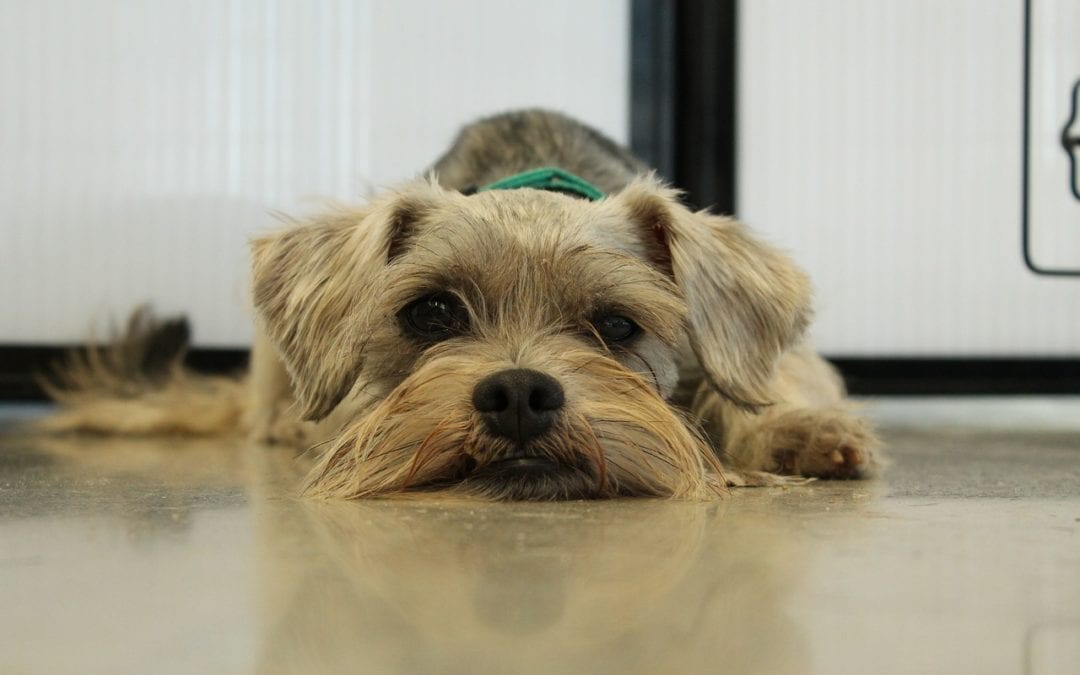Abby was the first one this fall. She is a 6 year old miniature Schnauzer. She had multiple intact uroliths (urinary bladder stones). Her stones were 100% magnesium ammonium Phosphate or struvite. The miniature schnauzer, Shih tzu and bichon are at higher risk than other breeds. Sometimes there are structural and functional factors that increase the risk for recurrent infections that set up conditions to grow stones.
Stones typically form when the urine has an excess of crystals. Like the rock candy that is formed from hypertonic sugar solution. The tiny crystals get together and form bigger crystals. The bigger crystals become stones. Because they are moving around in the bladder, they wear off the sharp edges and look like river stones instead of crystal gems. Some foods, especially some of the highly advertised premium priced generic type foods, are especially prone to crystal formation.
Knowing how and why a stone forms, helps us to prevent future stones. A portion of all of our stones are submitted to the lab for analysis. The lab reports the mineral composition of the stone in the various regions of the stone.
A urolith or stone is made up of several areas or regions. The place where it starts in not necessarily the center, but where it starts. This is called the nidus. This is important because the mineral type of the nidus is the place to focus the preventative plan.
Surrounding the nidus is the body layer. This is the largest portion of the stone. If there is no specific nidus, the body should be the focus of preventative measures.
The shell is the ‘concentric lamination fo the urolith’ which really just means the shell. These surface layers represent the most recent activity of the stone formation. If the shell is significantly different from the body layer it can be because of a change in diet, medication or the patient’s medical condition. Surface crystals are an incomplete lamination of the stone.
Another thing that can be a characteristic of a stone is a band or deposit. This is an area where the conditions were different at that formation time. A change in diet, medication or medical condition at various times will cause this.
Very rarely, there will be a hollow center where there is no crystalline/matrix material. This is usually where a foreign body was and it has dissolved. Think about a knot of suture that breaks loose and is the nidus for the stone formation. The stone will continue to form on itself even after the absorbable suture is dissolved.
Abby’s stone with 100% struvite is the easiest to understand. Often there is a recurrent infection. One of the common bacterial infections (Staphylococcus) produce urease which promotes struvite stone formation. Canned foods that are lower in protein, phosphorus and calcium make it less likely to form stones. It is a good idea to do routine urine cultures every three months or so to make sure there are no infections. If there is a functional defect that allows for bacteria to hide, it should be surgically fixed.
The specialists say that struvite stones can be dissolved in three to six weeks of a special diet. But this is in the lab with lab dogs or cats. In the home, there are sometimes things that pets get into that alters the pH or acidity of the urine and keeps the stones from dissolving. Abby’s mom had been trying the diet, but the stones persisted. There is the additional risk that the diet is high in fat (because of the reduced proteins), so pancreatitis and urinary tract infections (common in min schnauzers) are a risk while on the special diet. And we don’t always know what the stone is until after surgery. For all of these reasons, Abby’s mom chose surgery.
Stones also form in the kidneys. (Humans are more likely than dogs to make kidney stones.) Called nephroliths, 26% of them are struvite and the diet is one of the best options to try and dissolve kidney stones.
Chloe (10 year old female miniature poodle) and Bella (10 year old female miniature schnauzer) both had complex or compound stones. In Chloe, the nidus was 90% struvite and 10% calcium phosphate carbonate. The body was 55% struvite and 45% Calcium phosphate carbonate. The shell was only 15% struvite and 85% calcium phosphate carbonate.
Bella was more diverse. In Belle, the nidus was 65% struvite and 35% calcium phosphate carbonate. The body was 85% struvite and 15% Calcium phosphate carbonate. The shell was 90% struvite and 10% calcium phosphate carbonate.
The recommendations are to follow the prevention strategies to minimize the material at the center of the stone. This would include nutrition and urinary cultures. Both Belle and Chloe should have radiographs every 6 to 12 months to detect recurrent stones. The hope would be to remove them without surgery while they are still small.
We think of urinary stones being an annoyance, but not a medical urgency unless the stones block the urethral outflow. (If you cannot pee, you cannot get rid of toxins. If you cannot get rid of toxins, you quickly die.) But all three of these dogs were reported by their owners as doing better, being more active and eating better immediately after surgery. That is what we love to hear! Abby, Chloe and Bella are all doing much better. Three surgeries with similar recoveries, but they will have individual plans for prevention.

